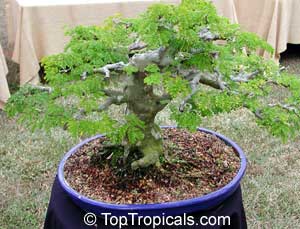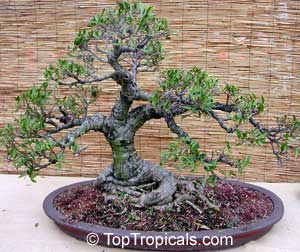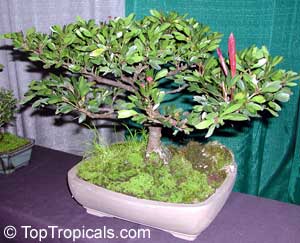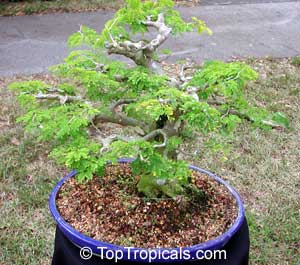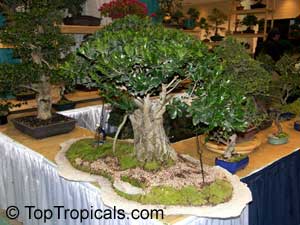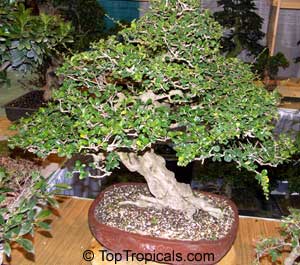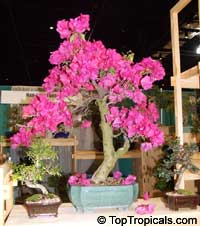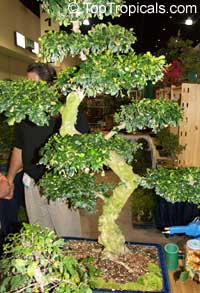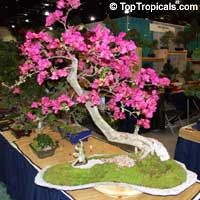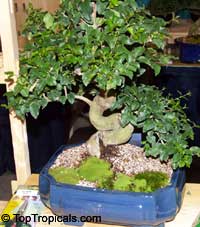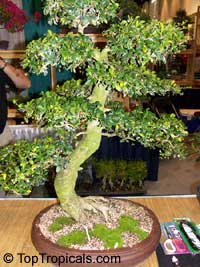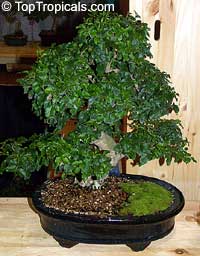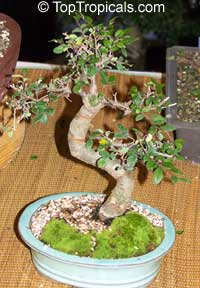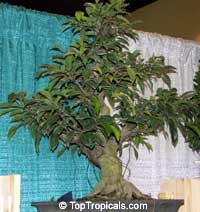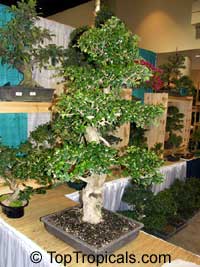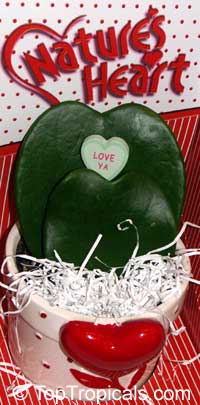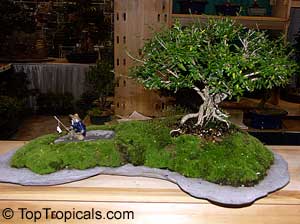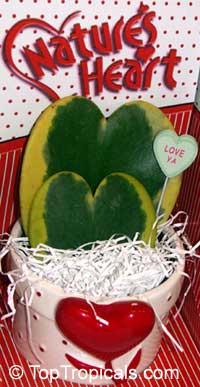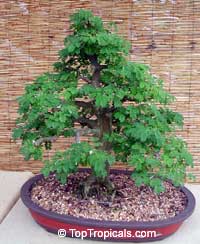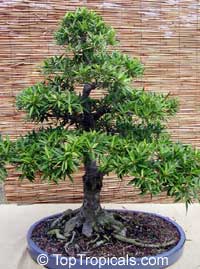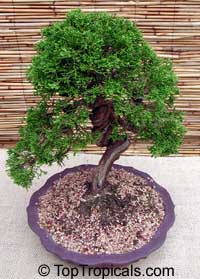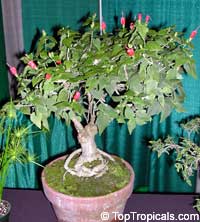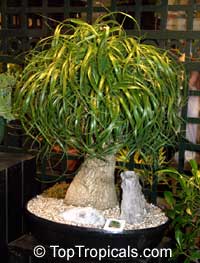Bonsai
Art of the Miniature Trees
Click on image to enlarge
|
|
Bonsai is the art of growing carefully trained, dwarf plants in containers, dwarfing trees by careful root and stem pruning coupled with root restriction. Bonsai means "tray gardening" in Japanese. The plants are formed to create an aesthetic shape and the illusion of age. The Chinese art of penjing is very similar to and is the precursor of the Japanese art of bonsai. A bonsai is not a genetically dwarfed plant. It is any tree or shrub species actively growing but kept small by crown and root pruning. Theoretically, any species could be used, though ones with attributes such as small leaves and twigs will generally make better bonsai, helping to create the illusion of a larger tree in miniature. Properly maintained bonsai can have lifespans that might be able to reach that of their full-sized counterparts. However, bonsai require a great deal of care, and improperly maintained bonsai will not survive. In the art of bonsai a sense of aesthetics, care, and patience come together. The plant, the shaping and surface of the soil and the selected container come together to express "heaven and earth in one container" as a Japanese cliche has it. Three forces come together in a good bonsai: shin-zen-bi or truth, essence and beauty. The usual plants used in Japan are species of pine, azalea, camellia, maple, beech, bamboo and plum, but there are many plants you can use for bonsai. In Japan the bonsai plants are grown outdoors and brought in to the tokonoma at special occasions when they most evoke the current season. The Japanese bonsai are meant to evoke the essential spirit of the plant being used: in all cases they must look natural and never show the intervention of human hands. Chinese penjing may more literally depict images of dragons or even be guided to resemble highly intricate Chinese characters, such as "longevity", in various styles, but usually cursive. There are many different styles of bonsai, but some are more common than others. These include formal upright, informal upright, cascade, semi-cascade, raft and literati. The formal upright is just as the name suggests, and is characterized by a tapering trunk and balanced branches. The informal upright is much like the formal, but may bend and curve slightly, although for aesthetic quality the tree should never lean away from the viewer. Cascade and semi-cascade are modelled after trees that grow over water or on the sides of mountains. Semi-cascade do not lean as far downward as the cascade style. Raft style bonsai are those that are planted on their side, and can include many other styles such as sinuous, straight-line, and group planting styles. These all give the illusion of a group of trees, but are actually the branches of a tree planted on its side. The literati style is the hardest to define, but is seen fairly often. The word literati is used in place of the Japanese bunjin which is a translation of the Chinese word wenjen meaning "scholars practiced in the arts". The literati style is usually characterized by a small number of branches typically placed higher up on the trunk and a long, contorted trunk. Their style is inspired by the Chinese paintings of pine trees that grew in harsh climates, struggling to reach the light of the sun. There are many plants you can use for bonsai, including those that don't look like a tree at all (jasmines, anthuriums, etc.). Important feature for successful bonsai is that the plant should have small leaves; fast-growing habit is a plus. List of tropical plants suitable for bonsai Buy bonsai starters from our store |
|
